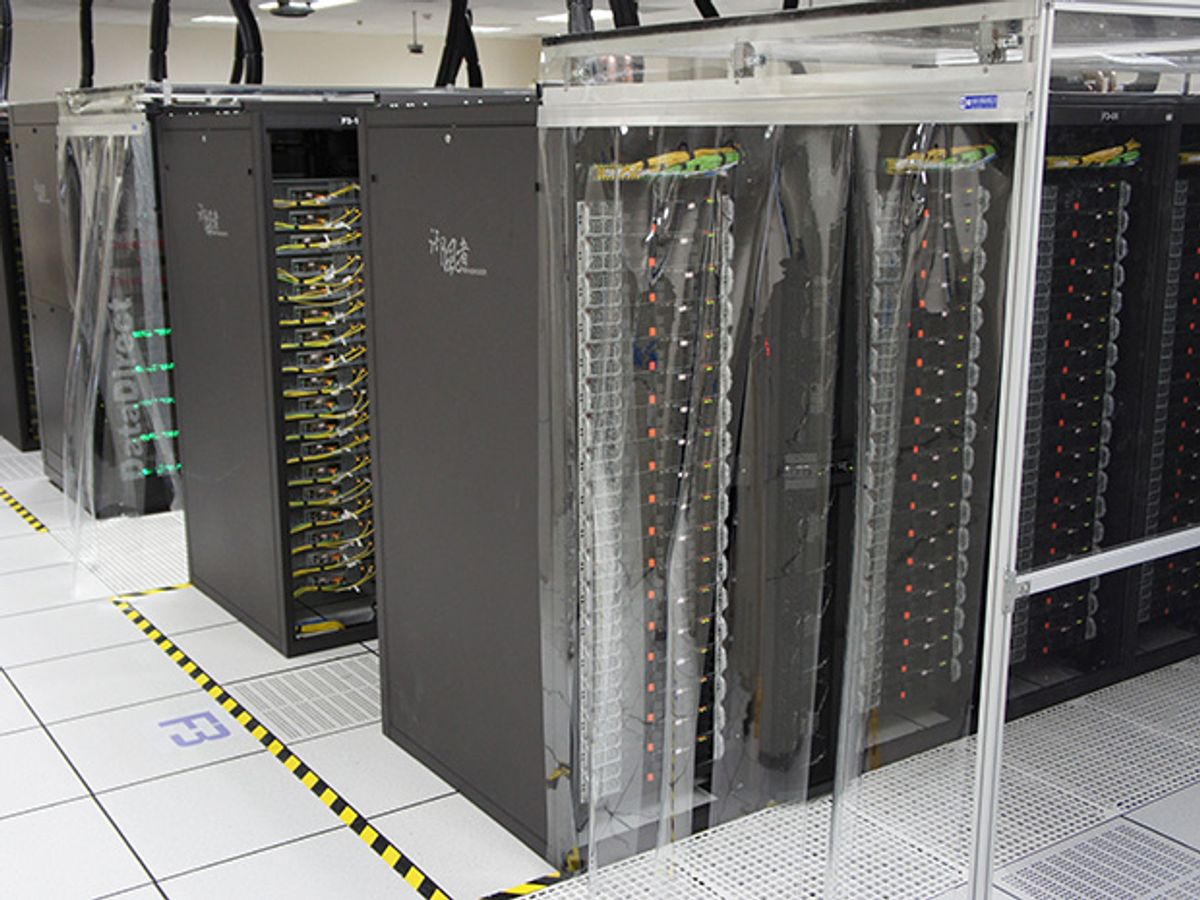A quick glance at the new ranking of top supercomputers gives a surprising showing by one of the world’s technological powerhouses. Taiwan does not possess a single machine powerful enough to make the Top500.org list. While there are many nations that don’t make the list, Taiwan is peculiar in that it has such an outsized grip on the computer chip industry. What’s more, its political rival, China, not only holds the world’s top machine, it now has more ranking supercomputers than any nation except the United States.
It has been a long decline. Taiwan’s most powerful machine supercomputer, the Advanced Large-scale Parallel Supercluster also known as ALPS or Windrider, ranked 42nd in June, 2011, shortly after its launch.
But the process of upgrading Taiwan’s supercomputing infrastructure has been slowed by ineffective government budget allocation. Since 2013, the National Center for High-performance Computing (NCHC), which operates Windrider, has failed twice to get its budget boosted enough to strengthen its supercomputing ability. While other countries poured money into the installation of powerful supercomputers as a way to show national power, Windrider fell to 303rd then 445th in June 2014 and June 2015.
“If our three-year budget proposal is approved early next year, Taiwan would gain a much better position on the Top 500 in 2018, when a 2 petaflops system is launched,” says Jyun-Hwei Tsai, Deputy Director General of NCHC. If such a system were launched today, it would rank 36th.
The Ministry of Science and Technology says it understands the importance of supercomputing and prioritized it in its budget proposal as it had in 2013 and in 2014, officials say. However, it’s really up to the Cabinet.
Cabinet spokesman Lih-chyun Sun says the government fully understands the importance of supercomputing and points out that Taiwan has promoted cloud computing and big-data projects. “It remains uncertain when sufficient budget would be made available for new systems. We’re still reviewing the budget proposal. The decision has not yet been made,” Sun says.
“The Cabinet will make a final decision early next year,” adds Tzong-chyuan Chen, Director General of the Department of Foresight and Innovation under the ministry. “In economic recession years, it’s difficult to gain budget for important science and technology projects with long-term impacts, which are not yet felt.”
It wasn't always like this. In June 2002, an IBM system at the NCHC center ranked 60th. In June 2007, the center’s newest system, called IRIS, ranked 35th.
Taiwan’s IRIS, however, was eventually kicked out of the Top 500 list in November 2009 due to a boom in supercomputer installations in many other countries, such as China. The world’s most powerful system, China’s Tianhe-2, or Milky Way-2, has held the top of the biannual Top 500 list six times in a row. And it is one of 109 systems in China that made the list. The huge increase in China's supercomputing power in recent years can be attributed in part to some government-back companies, such as Sugon and Inspur, which together manufactured 64 of the ranked systems.
According to NCHC’s Tsai, the big strides taken by other countries is a sore point in Taiwan. “We don’t compare ourselves with big countries, such as China, Japan, and the United States. What frustrates us more is that, in South Korea, the momentum of national supercomputing is now stronger than ours,” he says. Currently, South Korea’s two fastest systems rank 29th and 30th.
It’s not as if there isn’t much demand for supercomputing in Taiwan. Currently, Taiwan’s Windrider utilization exceeds 80 percent. “It’s like a crowded superhighway. And we’ve heard complaints from some users,” NCHC’s Tsai says.
According to Tsai, Windrider is most significantly used in basic physics, chemistry, biomedical imaging. But certain key fields get prioritized access. Those include environmental studies, climate change, earth science, natural disasters, and water resources management.
“Taiwan is prone to natural disasters, such as typhoons, floods and earthquakes. A powerful database, backed by powerful supercomputing systems, is essential for conducting better predictions of typhoons,” Tsai says.
Due to the limit of Taiwan's supercomputing capability, some scientists have taken to building their own computer clusters and speeding up existing resources by making graphics processing unit-based accelerators.
Tzihong Chiueh, a theoretical astrophysicist at National Taiwan University, says they had not relied on NCHC’s system for years. Since 2013, his team has been taking advantages of a self-built system, that can reach tens of teraflops.
“A petaflop-scale system, should it be funded by the government, would certainly be useful to researchers,” he says. “The investment should indeed be prioritized. I hope it can work at least 10 times faster than the current system.”
This story was corrected on 17 December. Windrider was the 303rd ranked supercomputer in June 2014.



